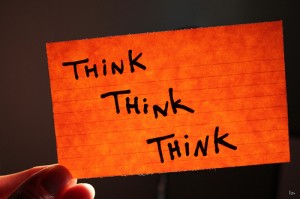How can technology be effectively and authentically integrated into math and science learning environments? This is a question that continues to occupy my mind and propels me to investigate it further. It’s no longer “good enough” to just bring technology into classroom. I have tasted the rewards of embedding technology into the learning process allowing it to become a means of discovery, application, and synthesis as students take charge of their own learning. Moving beyond seeing technology as a mere tool to add to or replace what predictably already happens in the classroom is a necessary shift in thinking that needs to occur. The challenge isn’t just in finding new and better technology. It involves investing in new strategies and instructional design that streamline the use of technology as an innovative integral component of the process.
The issue of effective technology integration is a complex dilemma for educators. Replacing the common regime of isolating it for drill and practice, collecting information, and presenting “good copy” version of assignments is more convoluted than many may think. Meaningful integration of technology requires an evolution of how teachers think about it, which is preceded by the desire to embrace it, learn it, and take risks with using it in the classroom. That in itself is a significant challenge for many teachers, which was illuminated by the data collected through the interview process; therefore, before best practices using technology can be validly analyzed, we must first ask “How can teachers be encouraged and supported in the acquisition and sustainability of technology skills?” It’s both unrealistic and unfair to assume a level of comfort and knowledge prior to setting expectations for technology integration. Progress towards the goal of teachers using technology effectively must begin with a commitment towards helping them better understand it in an effort to increase their overall confidence with it. Technology glitches need to be expected, but not feared, so teachers must learn to develop trouble-shooting strategies and be prepared to “switch gears” to Plan B if necessary.
Across diverse educational settings, these issues of how technology is viewed, used, and how school and district infrastructure can be designed to support teachers wanting to use technology were recurring themes documented in the various interview abstracts posted in the ETEC533 discussion forum. What technology can offer educators will remain largely untapped until we can implement effective ways of building skill capacity. Media literacy is a critical element that teachers must possess themselves before they can begin encouraging students to develop it. For all the potential educational benefits technology purports to offer, without this aspect teachers will continue to face difficulties in being able to choose and use the best forms of technology to help teach their subject matter. Like Freire advised, we need to be analyzing how we are using technology and identify the pedagogy underlining its integration in schools because computers are “not technologically determined to compel students to use them in a critically conscious manner” (Kahn & Kellner, 2007); however, before we can reach this pinnacle educators must travel down this path for themselves first. Given the underlying obstacles of time, money, mindset, access, and expertise, integrating technology effectively is a challenging enterprise.
Kahn, R. & Kellner, D. (2007). Paulo Freire and Ivan Illich: technology, politics and the reconstruction of education. Policy Futures in Education, 5(4), 431-448. doi:10.2304/pfie.2007.5.4.431
image: OverThink by las – initially released under a CC Attribution – Noncommercial – No Derivative Works license


